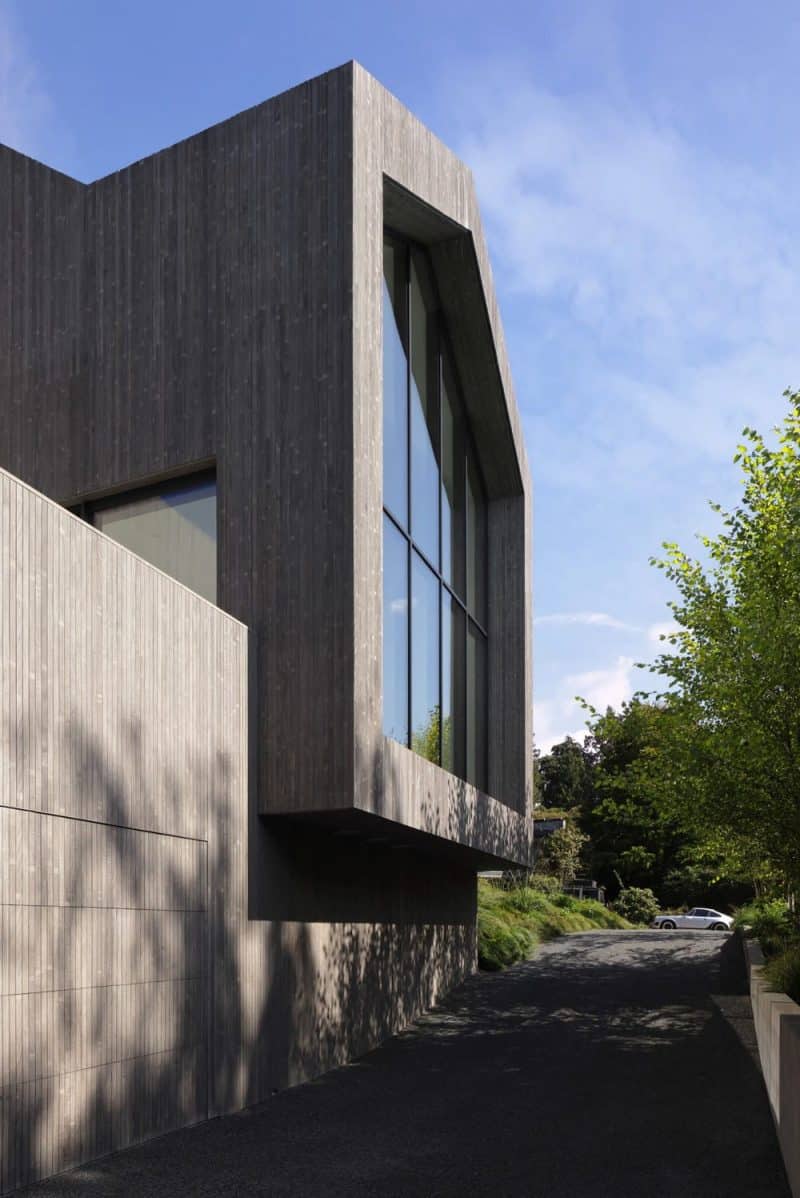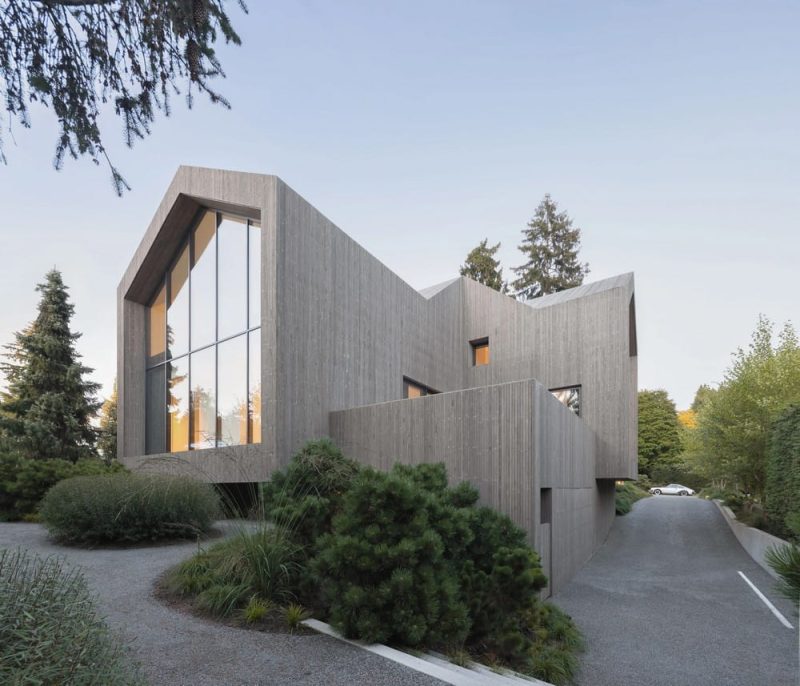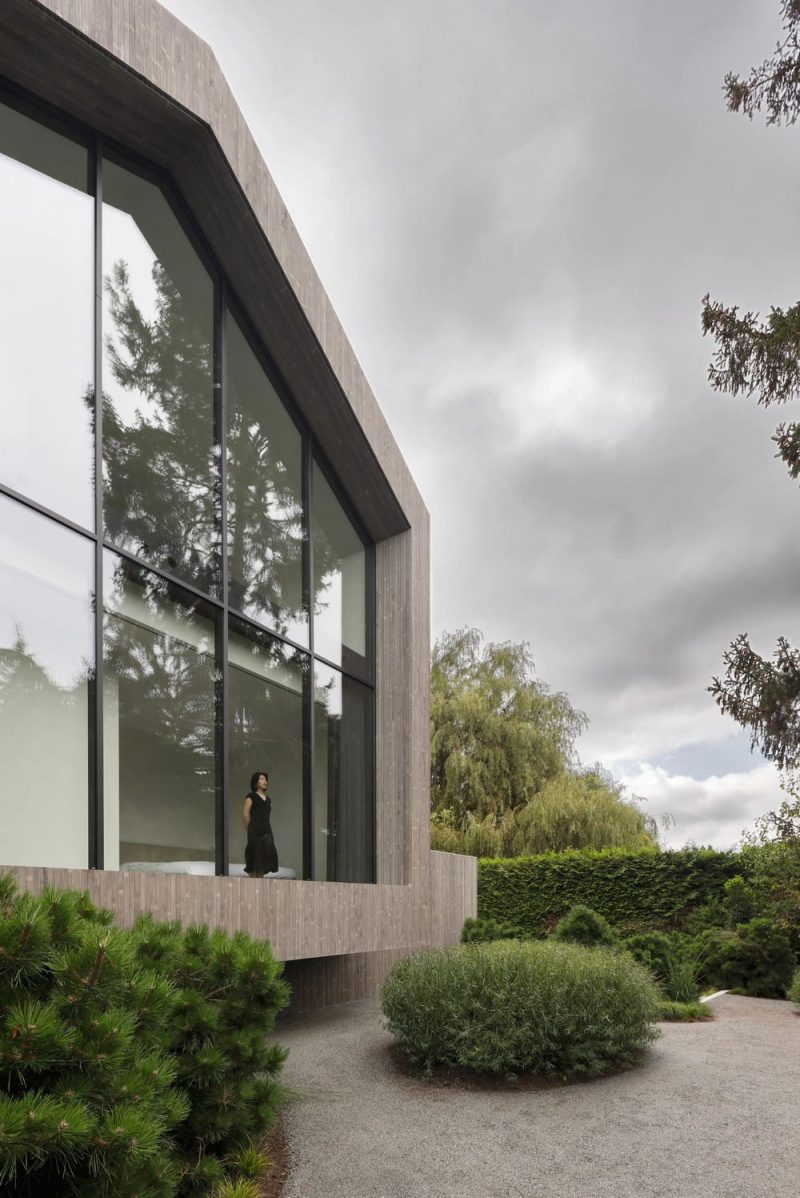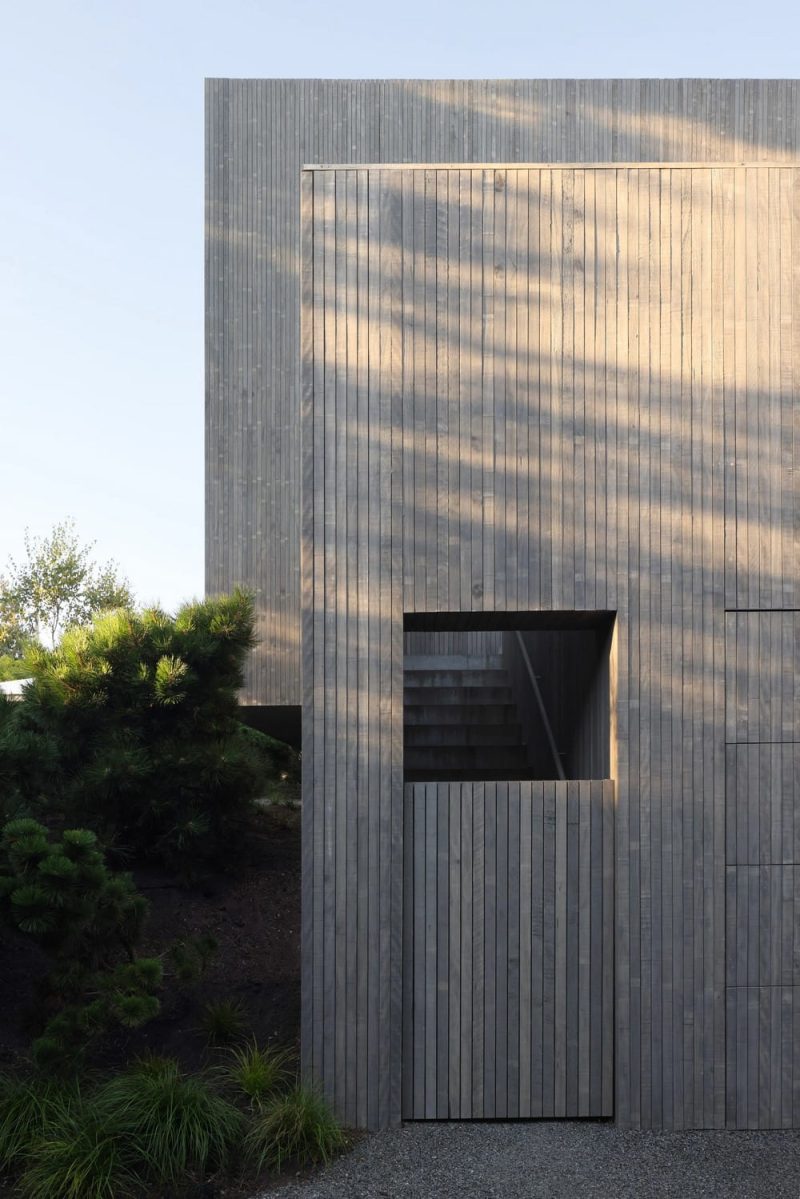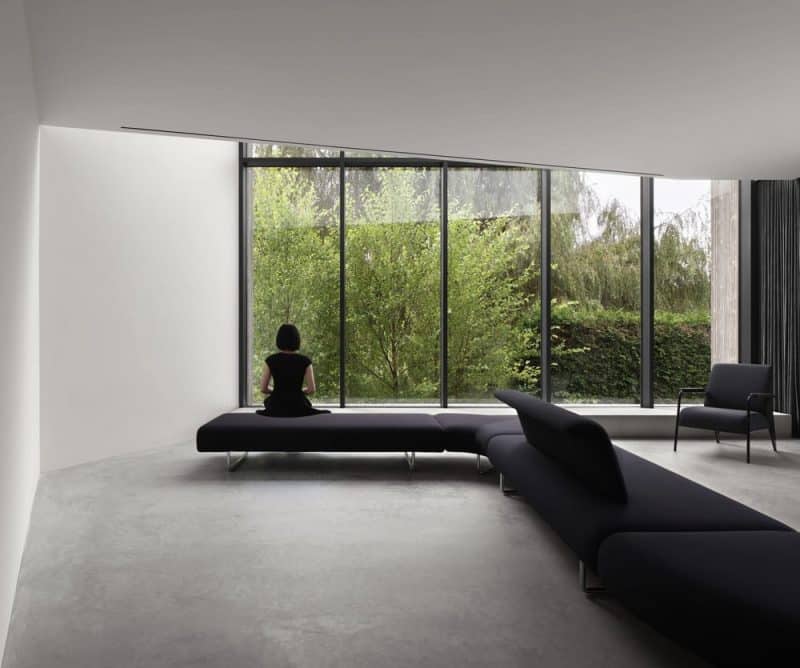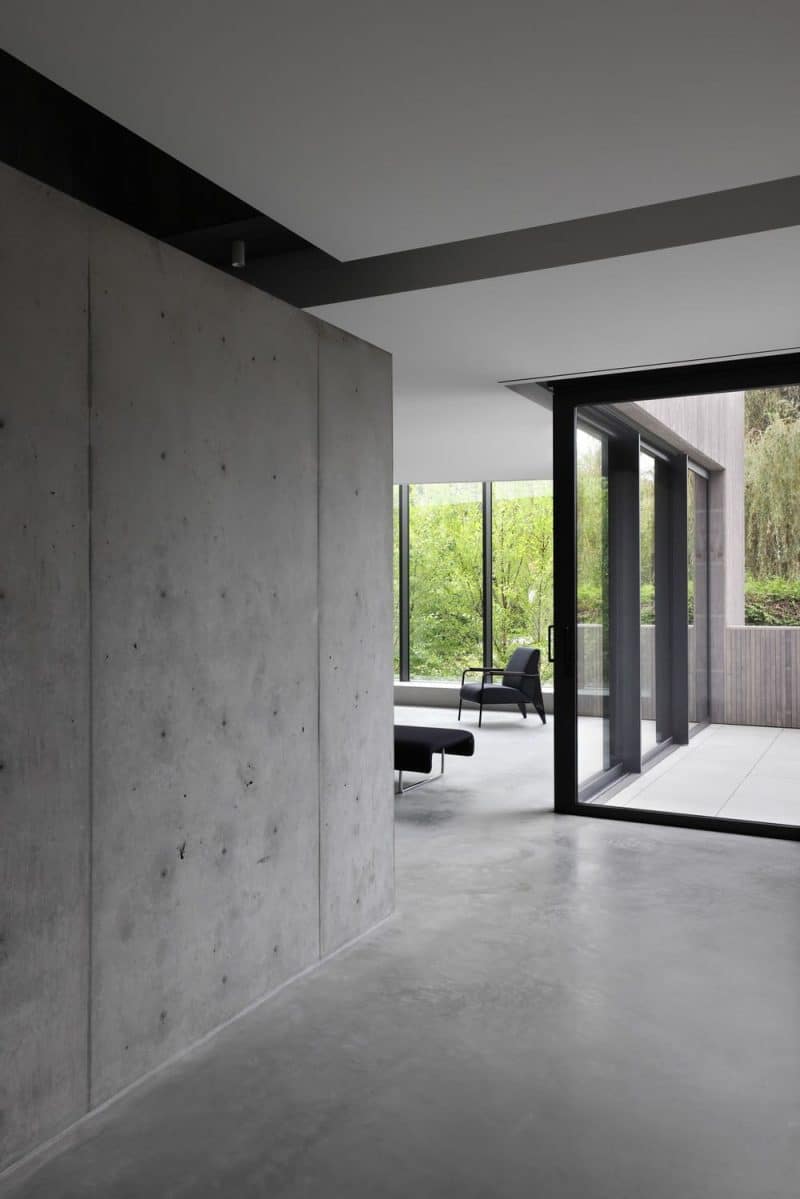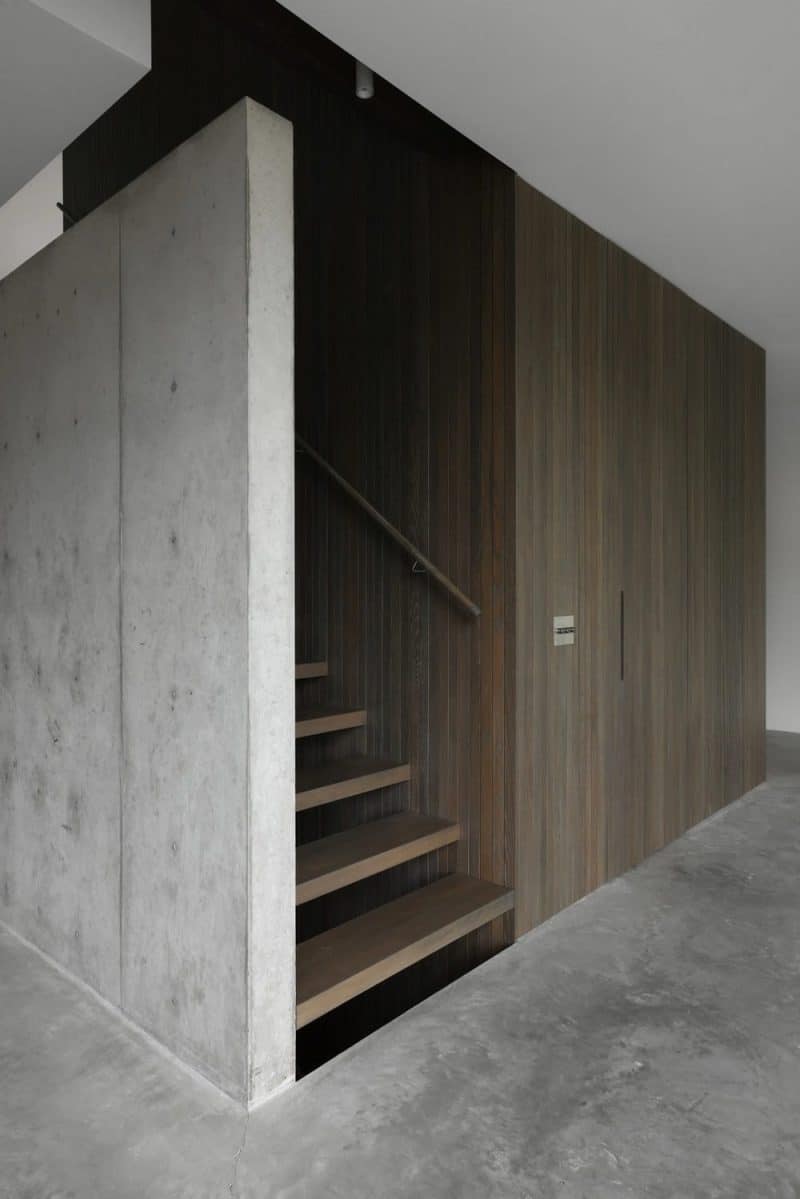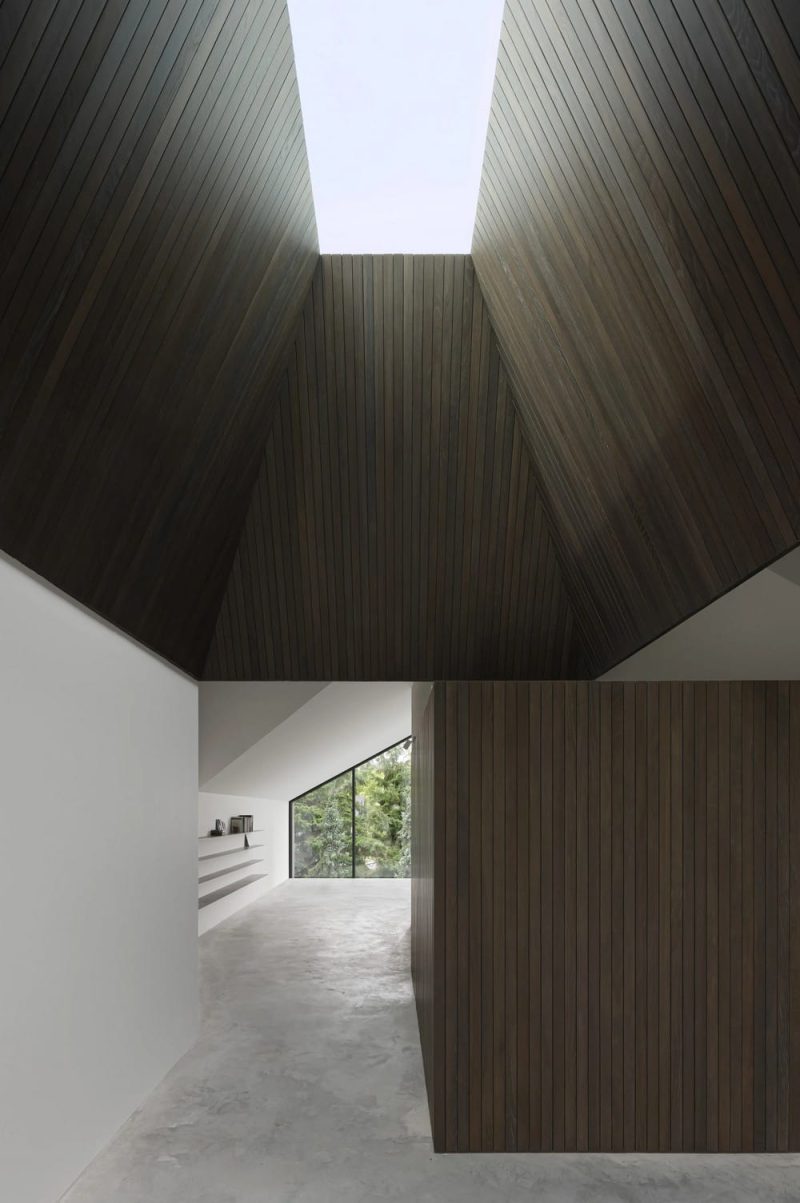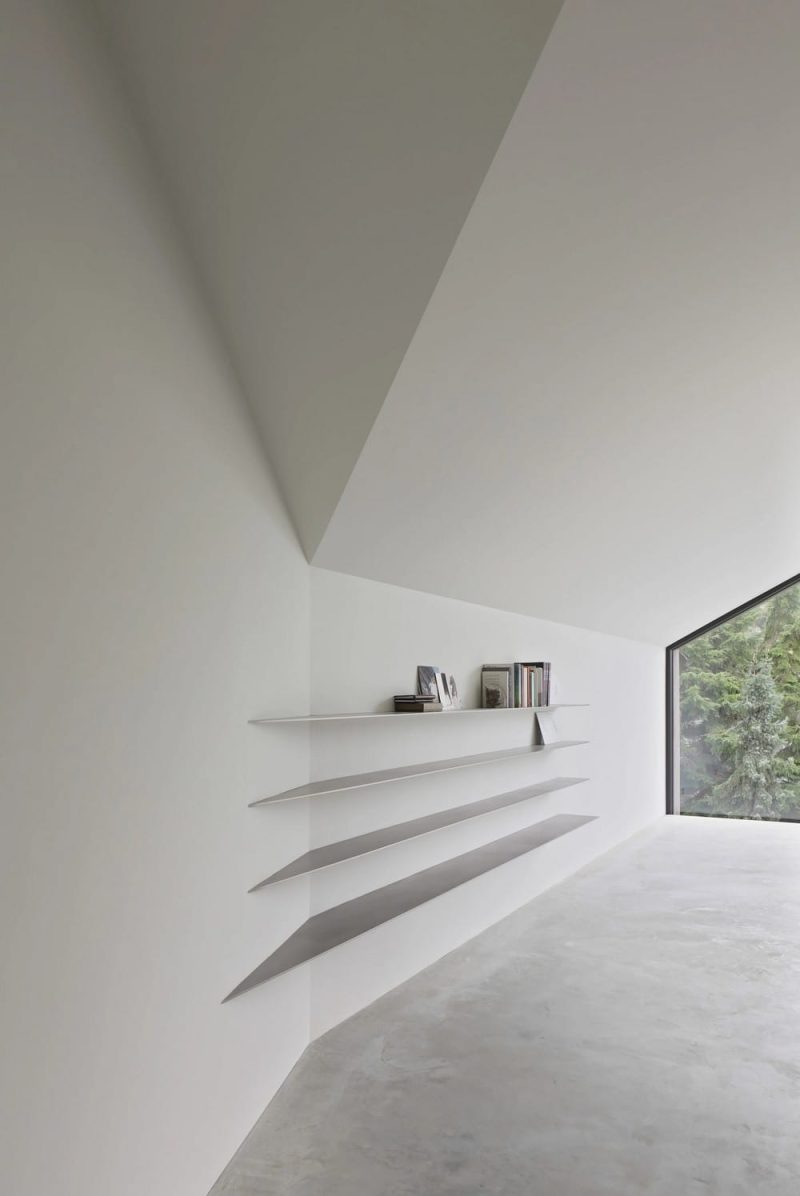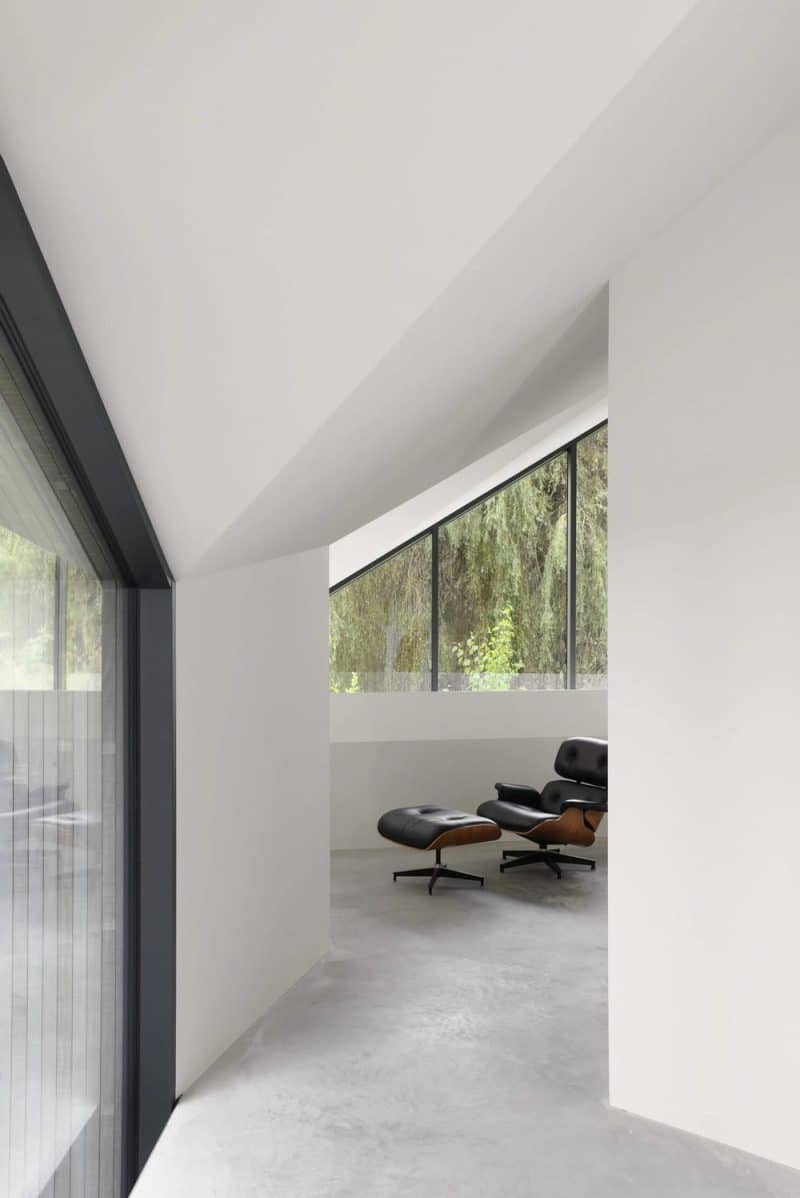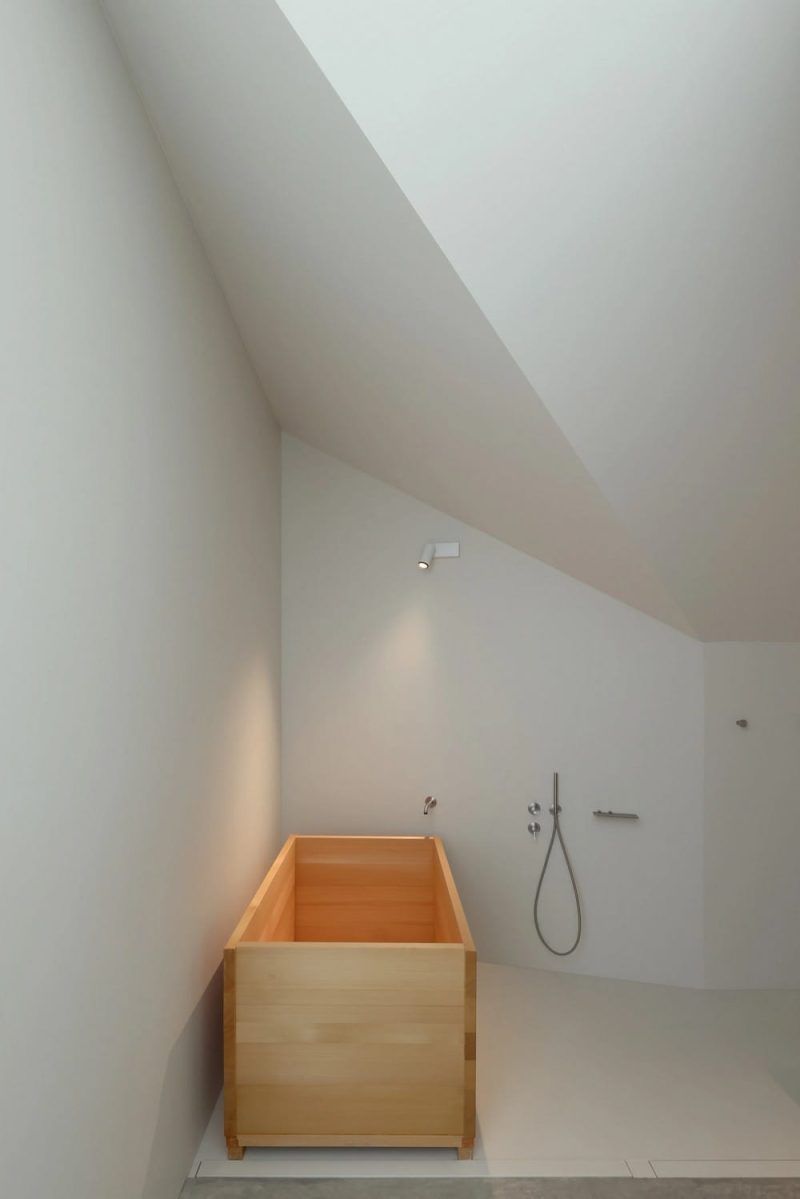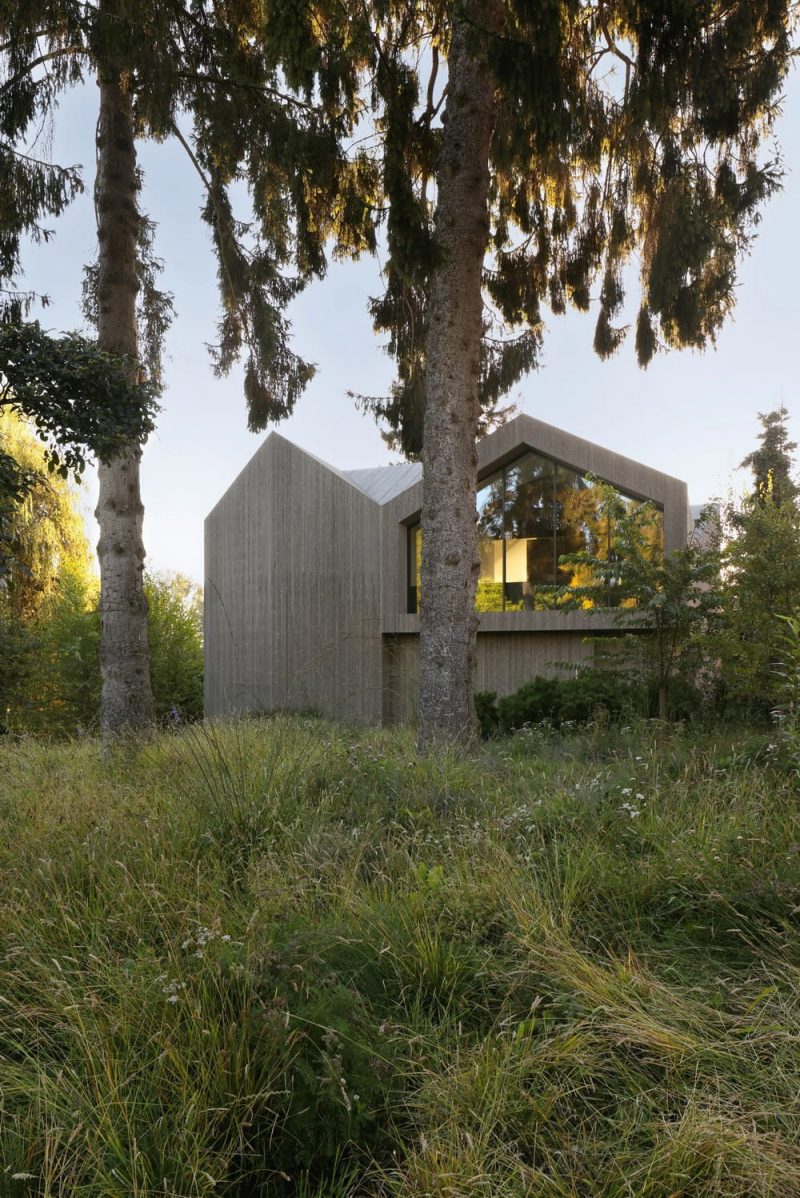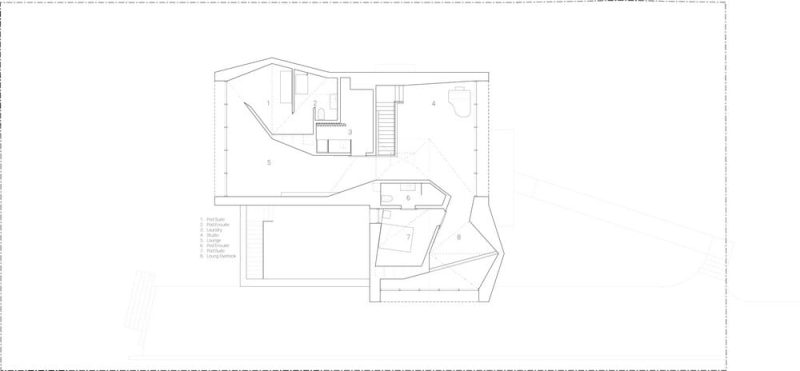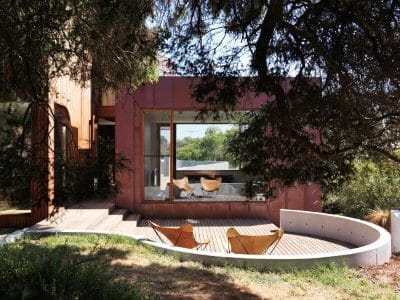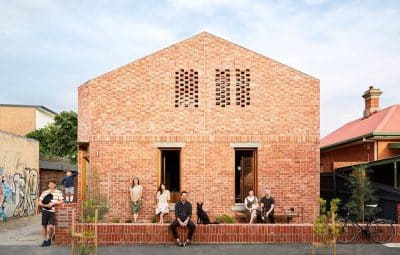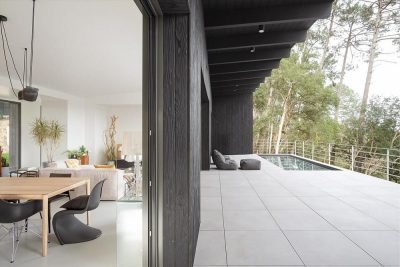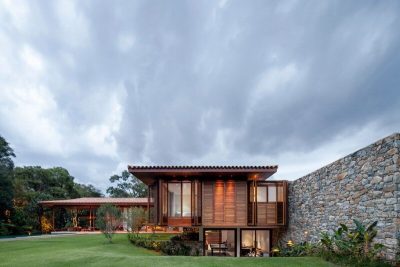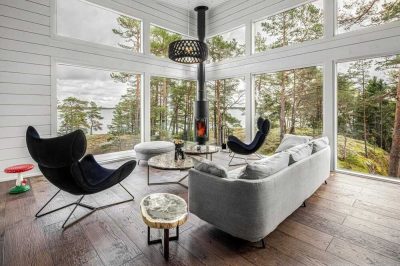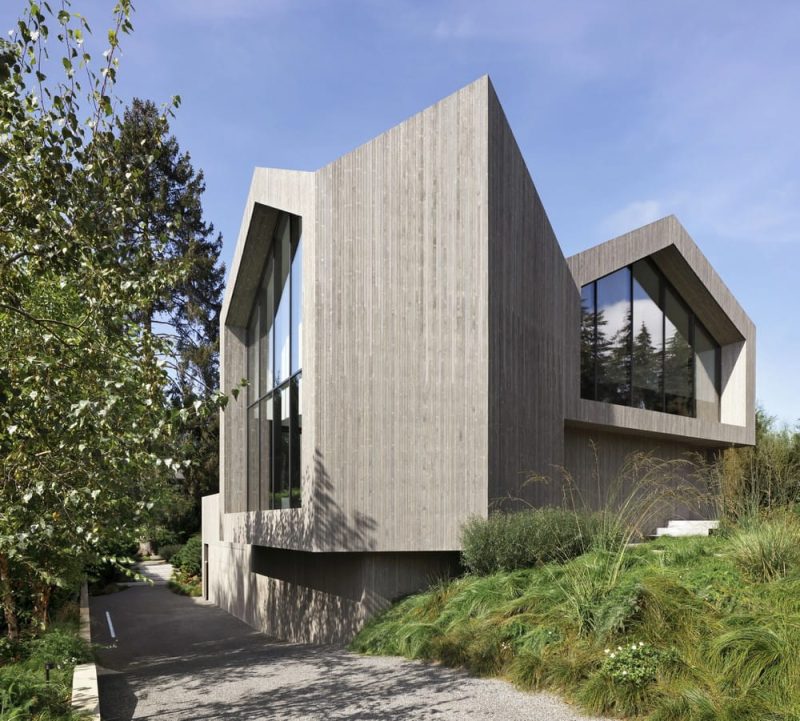
Project: Re-folded House
Architecture: Mcleod Bovell Modern Houses
Location: Vancouver, Canada
Year: 2024
Photo Credits: Ema Peter
In a rare and dynamic shift, the Re-Folded House by Mcleod Bovell Modern Houses emerged from a mid-construction re-conceptualization. When the original homeowners stepped aside and their daughter took over management of the project, she brought not only a fresh perspective but a bold challenge: to question the conventional structure and spatial logic of a house. What followed was an architectural intervention that peeled back assumptions and reassembled them with layered intent—folded, fluid, and finely attuned to both site and story.
Rethinking Space: A Cinematic Flow of Light, Movement, and Form
This reimagination began with a reevaluation of the home’s geometry and programmatic relationships. Rather than following conventional cues—rooms segmented by doors, functions defined by fixed boundaries—the architects embraced a new spatial language. Folded walls, canted ceilings, and floating floor plates replace rigid transitions with sculpted thresholds and angular prosceniums that invite movement and exploration.
Here, space doesn’t simply divide—it unfolds. Angled corridors prompt a sense of discovery. Light spills unexpectedly across multifaceted surfaces. Rooms borrow from each other, with furniture sparse and sculptural, suggesting multiple ways of inhabiting each area. Even circulation becomes cinematic: each turn reveals a new axis, a glimpse of view, a brush of shadow, or a changing material tone.
Material Integrity Rooted in Place
These spatial innovations are grounded in a material clarity that speaks directly to the home’s unique geography. Situated on a floodplain formed by sediment deposits in the delta of the Fraser River—North America’s longest undammed river—the house needed to withstand the environmental volatility of its location.
To that end, the design team specified Accoya, a sustainably treated pine developed in the Netherlands for direct contact with water. With its distinctive variegated “sticker” marks—remnants of its industrial curing process—the material brings an authenticity that is both tactile and visual. Over time, it weathers to a silvered tone, echoing the site’s native hemlocks and enhancing the home’s connection to its landscape.
The house’s lower level accepts the floodplain’s natural cycle, embracing resilience over resistance. Durable materials replace vulnerable finishes—no drywall, no batt insulation. Mechanical systems are protected within a waterproof bunker. These decisions reflect a long-term, living dialogue with the land, not just a temporary response.
Landscape as Layered Narrative
The landscape design continues this conceptual folding, structured around three integrated layers. The first, inspired by river sedimentation, creates functional thresholds through subtle changes in surface—driveways, on-grade stairs, and pathways blend into the terrain. The second layer is a living one: sedges, wetland grasses, and native shrubs stitch the property into the surrounding ecology, softening boundaries and drawing the wetland up toward the house.
Above this, the third layer elevates the human experience—floating walkways, benches, and platforms hover above the vegetated base, offering moments of pause and immersion. These elevated elements don’t dominate the land; they coexist with it, responding to the topography and seasonal changes in subtle, poetic ways.
A Meditation on Home, Nature, and Change
Re-Folded House is more than a home—it’s a meditation. On what it means to live in alignment with one’s surroundings. On how material, form, and movement can echo the land’s own patterns. And on the idea that family homes can evolve not only through generations, but through values, insight, and a willingness to question the expected.
Folding, both literal and metaphorical, shapes every aspect of this project—from angular architecture and sediment-inspired pathways to the personal layers of the family story. In the end, this house doesn’t just reflect the land—it interprets it. And in doing so, it redefines what home can mean in a place where water, time, and people are in constant dialogue.
